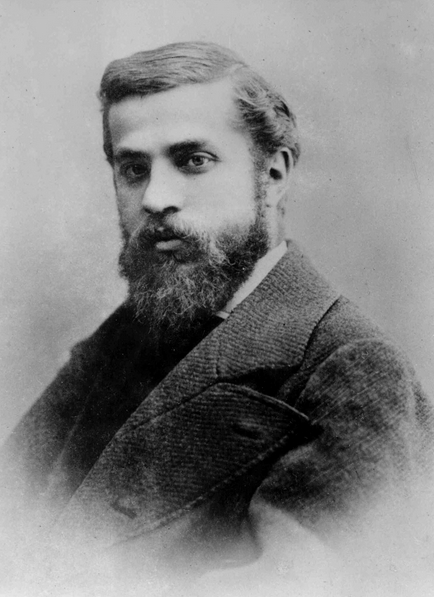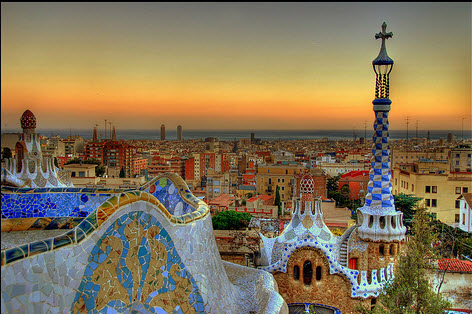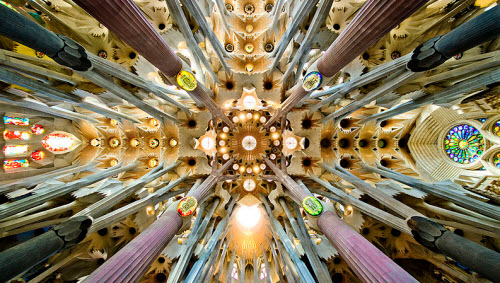Because of this, originality consists in returning to the origin.
~Antonio Gaudi..in Gaudí’s mind, religious conservatism – the more extreme, the nobler – fused with the retention of Catalan identity
~Robert Hughes
Antoni Gaudí’s Top 5 Architecture Works:
| Born | 25 June 1852 Reus, Catalonia, Spain |
|---|---|
| Died | 10 June 1926 (aged 73) Barcelona, Catalonia, Spain |
| Buildings | Sagrada Família, Casa Milà, Casa Batlló |
| Projects | Park Güell, Colònia Güell |
Antoni Gaudí i Cornet (25 June 1852–10 June 1926) was a Spanish Catalan architect and figurehead of Catalan Modernism. Gaudí’s works reflect his highly individual and distinctive style and are largely concentrated in the Catalan capital of Barcelona, notably his magnum opus, the Sagrada Família.
Much of Gaudí’s work was marked by his big passions in life: architecture, nature, religion. Gaudí studied every detail of his creations, integrating into his architecture a series of crafts in which he was skilled: ceramics, stained glass, wrought ironwork forging and carpentry. He introduced new techniques in the treatment of materials, such as trencadís, made of waste ceramic pieces.
After a few years under the influence of neo-Gothic art and Oriental techniques, Gaudí became part of the Catalan Modernista movement which was reaching its peak in the late 19th and early 20th centuries. His work transcended mainstream Modernisme, culminating in an organic style inspired by nature. Gaudí rarely drew detailed plans of his works, instead preferring to create them as three-dimensional scale models and molding the details as he was conceiving them.
Gaudí’s work enjoys widespread international appeal and many studies are devoted to understanding his architecture. Today, his work finds admirers among architects and the general public alike. His masterpiece, the still-uncompleted Sagrada Família, is one of the most visited monuments in Spain. Between 1984 and 2005, seven of his works were declared World Heritage Sites by UNESCO. Gaudí’s Roman Catholic faith intensified during his life and religious images permeate his work. This earned him the nickname “God’s Architect” and led to calls for his beatification.
Park Güell
To work with, he was a nightmare. He was short tempered. He was arrogant. He treated workers with considerable contempt. He did all the things that demanding brilliant maestros are in the bad habit of doing.
~Robert Hughes
Style
Gaudí’s professional life was distinctive in that he never ceased to investigate mechanical building structures. Early on, Gaudí was inspired by oriental arts (India, Persia, Japan) through the study of the historicist architectural theoreticians, such as Walter Pater, John Ruskin and William Morris. The influence of the Oriental movement can be seen in works like the Capricho, the Güell Palace, the Güell Pavilions and the Casa Vicens. Later on, he adhered to the neo-Gothic movement that was in fashion at the time, following the ideas of the French architect Viollet-le-Duc. This influence is reflected in the Colegi de les Teresianes, the bishop’s palace in Astorga, the Casa Botines and the Bellesguard house as well as in the crypt and the apse of the Sagrada Família. Eventually, Gaudí embarked on a more personal phase, with the organic style inspired by nature in which he would build his major works.
The nave in the Sagrada Familia with a hyperboloid vault. Inspiration from nature is taken froma tree, as the pillar and branches symbolise trees rising up to the roof.
Gaudi – top 5
- The Basílica i Temple Expiatori de la Sagrada Família (English: Basilica and Expiatory Church of the Holy Family; Spanish: Basílica y Templo Expiatorio de la Sagrada Familia), commonly known as the Sagrada Família, is a large Roman Catholic church in Barcelona, Catalonia, Spain, designed by Catalan architect Antoni Gaudí (1852–1926). Although incomplete, the church is a UNESCO World Heritage Site, and in November 2010 was consecrated and proclaimed a minor basilica by Pope Benedict XVI.
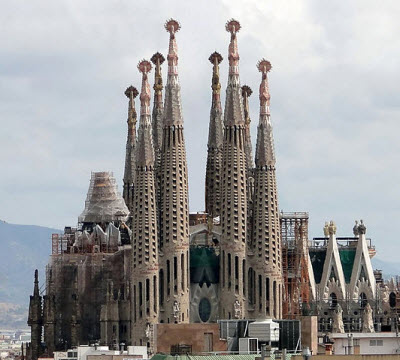
- Casa Milà (better known as La Pedrera (meaning the ‘The Quarry’), is a building designed by the Catalan architect Antoni Gaudí and built during the years 1906–1912. It is located at 92, Passeig de Gràcia (passeig is Catalan for promenade) in the Eixample district of Barcelona, Catalonia, Spain.It was a controversial design at the time for the bold forms of the undulating stone facade and wrought iron decoration of the balconies and windows, designed largely by Josep Maria Jujol, who also created some of the plaster ceilings.Architecturally it is considered an innovative work for its steel structure and curtain walls – the façade is self-supporting. Other innovative elements were the construction of underground car parking and separate lifts and stairs for the owners and their servants.In 1984, it was declared World Heritage by UNESCO. The building is made open to the public by the Catalunya Caixa Foundation, which manages the various exhibitions and activities and visits to the interior and roof.
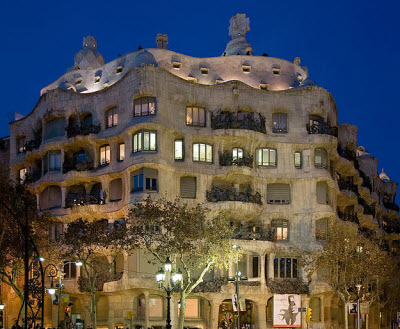
- Park Güell is a garden complex with architectural elements situated on the hill of El Carmel in the Gràcia district of Barcelona, Catalonia, Spain. It was designed by the Catalan architect Antoni Gaudíand built in the years 1900 to 1914. It has an extension of 17.18 ha (0.1718 km²), which makes it one of the largest architectural works in south Europe. It is part of the UNESCO World Heritage Site “Works of Antoni Gaudí”.
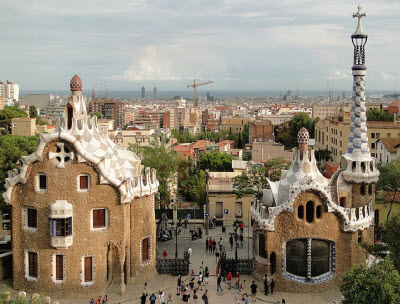
- Casa Batlló is a renowned building located in the heart of Barcelona and is one of Antoni Gaudí’s masterpieces. Casa Batlló is a remodel of a previously built house. It was redesigned in 1904 by Gaudí and has been refurbished several times after that. Casa Batlló evokes the creativity and playfulness of Gaudí’s work through the incracite facades and creative floors. Gaudí’s assistants Domènec Sugrañes i Gras, Josep Canaleta y Joan Rubió also contributed to the renovation project.
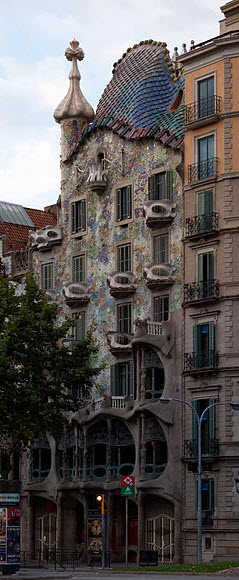
- The Palau Güell is a mansion in Barcelona, Catalonia, Spain designed by the Catalan architect Antoni Gaudí for the Catalan industrial tycoon Eusebi Güell.It is part of the UNESCO World Heritage Site “Works of Antoni Gaudí”.
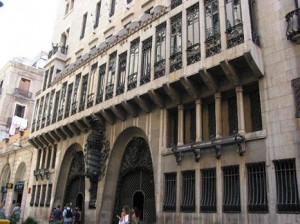
-Egil
